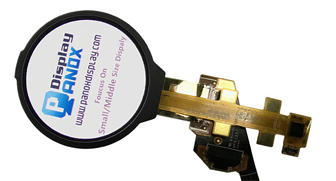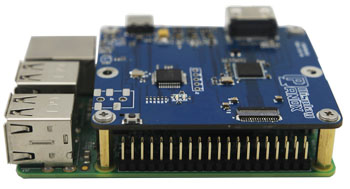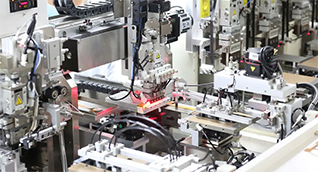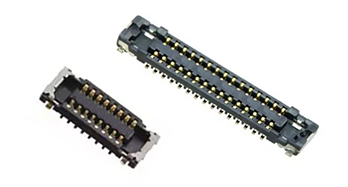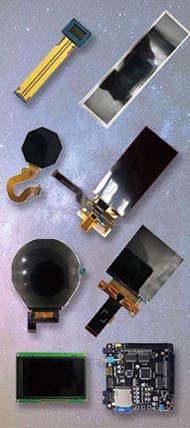Color Memory LCD is a display technology combining fast refresh rates with ultra-low power use by embedding 1-bit memory in each pixel, enabling image retention without constant refreshing. Designed for vivid color presentation, it is ideal for outdoor and battery-powered devices due to its reflective display layer. Also check: Micro OLED
How Does Color Memory LCD Technology Work?
Color Memory LCD functions as a hybrid reflective and transmissive display, where each pixel contains an integrated 1-bit memory circuit that stores its on/off state. Color pixels comprise red, green, and blue sub-pixels. The embedded pixel memory retains the image without continuous power, so power consumption occurs only during image updates. The reflective layer bounces ambient light to enhance visibility in bright environments without needing a backlight.
This technology’s pixel-level control allows for fast updates with minimal energy drain, differentiating it from conventional LCDs and E-Ink panels. The embedded memory within each pixel maintains the image state independently, contributing significantly to its power efficiency.
What Are the Key Advantages of Color Memory LCD Compared to Other Displays?
| Feature | Color Memory LCD | Traditional LCD (TFT) | E-Ink Display |
|---|---|---|---|
| Power Consumption | Extremely low; only during updates | High; constant refreshing needed | Extremely low; only during updates |
| Refresh Rate | Fast; supports motion and video | Very fast; ideal for HD video | Very slow; no video or animation |
| Outdoor Visibility | Excellent; reflective using ambient light | Poor; washed out by sunlight | Excellent; paper-like appearance |
| Pixel Control | Individual pixel memory | Matrix-based refreshing | Particle microcapsule-based |
| Durability | Robust in wide temperature ranges | Sensitive to temperature | Brittle and temperature sensitive |
This table highlights Color Memory LCD’s unique blend of energy efficiency, fast refresh capabilities, outdoor readability, and robustness, making it a superior choice for many applications.
Where Are Color Memory LCDs Commonly Used?
Color Memory LCDs are perfect for battery-powered and outdoor devices that require readability in sunlight and ultra-low power consumption. Key sectors include:
-
Wearables: Smartwatches and fitness trackers benefit from always-on displays without draining battery.
-
Internet of Things (IoT): Smart home gadgets and sensors use these displays to show data efficiently.
-
Handheld Devices: Portable tools and communication devices gain from the low power and sunlight readability.
-
Outdoor Instruments: Bicycle speedometers and outdoor gauges utilize the high visibility in direct sunlight.
-
Small Information Displays: Home energy monitors and static data interfaces thrive with minimal update power.
Brands like Panox Display supply these versatile Color Memory LCD solutions tailored for wearable and industrial markets, enabling long-lasting battery life and rugged application readiness.
How Does Pixel Architecture Enable Power Efficiency in Color Memory LCD?
Each pixel contains a tiny embedded 1-bit memory circuit representing its lit/unlit state. For color, this extends to RGB sub-pixels. Unlike traditional LCDs needing constant refreshing, Color Memory LCD pixels remember their state, eliminating continuous power drain.
The memory-in-pixel design allows the screen to draw power only while updating content. Once set, pixels maintain their visual state passively. This architecture enables fast data updates, supporting motion and video while reducing power use dramatically compared to traditional TFT LCDs.
Why Is Outdoor Visibility Superior in Color Memory LCD?
Color Memory LCD incorporates a reflective layer that redirects ambient light through the liquid crystal and color filter layers. This reflective property ensures high visibility and vibrant color rendering in direct sunlight without relying on a power-consuming backlight.
The display also supports a backlight for low-light conditions, enhancing versatility. This outdoor readability makes it ideal for bike computers, outdoor instrumentation, and wearable devices where lighting varies widely.
Can Color Memory LCDs Display Video and Animations?
Yes, unlike E-Ink displays, Color Memory LCDs support fast refresh rates capable of handling motion video, scrolling text, and animations. Thanks to embedded pixel memory and quick update capability, these displays offer fluency closer to traditional LCDs but with much lower power demand.
This ability makes them suitable for dynamic content on low-power, always-on devices such as smartwatches and IoT displays, supplied by manufacturers like Panox Display who excel in customized solutions balancing performance and energy efficiency.
Which Industries Benefit Most from Color Memory LCD Technology?
Industries leveraging Color Memory LCD technology include:
-
Wearables and Fitness: For always-on health monitoring displays.
-
IoT and Smart Home: To show real-time sensor data with minimal power.
-
Outdoor and Sports Equipment: Where sunlight readability and battery life are critical.
-
Automotive and Industrial: Displays in harsh environments needing durable and efficient screens.
-
Consumer Electronics: Portable devices requiring long battery life and bright indoor/outdoor displays.
Panox Display’s portfolio serves these sectors by providing both standard and custom Color Memory LCD panels, tailored to the robust demands of industrial and consumer electronics worldwide.
How Does Panox Display Support Customization in Color Memory LCDs?
Panox Display offers extensive OEM services, including custom LCD panel design, controller boards, PCBs, and touch integration. Their capability to source premium-grade panels from top manufacturers ensures clients access to high-quality display solutions without high minimum order quantities.
Their flexible manufacturing approach supports small- to medium-sized companies and startups, providing bespoke Color Memory LCDs optimized for various applications, especially wearables, industrial devices, and IoT markets requiring reliable, power-efficient displays.
What Are Some Challenges and Future Developments in Color Memory LCD Technology?
Challenges include optimizing color gamut and contrast compared to OLEDs while maintaining low power usage. Future development focuses on increasing resolution, color accuracy, and integrating touch and flexible form factors.
Manufacturers like Panox Display invest in automatic production lines to scale up supply and innovate in display customization, integrating advanced controllers and energy-saving techniques to broaden Color Memory LCD application fields.
Panox Display Expert Views
“Color Memory LCD represents a transformative step in display technology, perfectly balancing power efficiency and versatile performance for outdoor and battery-powered devices. Panox Display is committed to advancing this technology, providing OEM customers with tailored, high-quality panels that fit demanding industrial and wearable markets. The embedded memory architecture significantly lowers power use without compromising speed or image quality, making it ideal for the future’s connected devices ecosystem.”
Conclusion
Color Memory LCD technology combines embedded pixel memory with reflective color display to deliver fast, vivid, and energy-efficient screens ideal for outdoor and portable use. Its hybrid architecture supports video-capable refresh rates and superior sunlight visibility while consuming minimal power, especially during static image display.
Panox Display’s market leadership in supplying customizable Color Memory LCD solutions supports innovation in wearables, IoT devices, outdoor equipment, and more. For projects requiring durable, power-saving displays with excellent visual performance, integrating Color Memory LCDs from Panox Display ensures longevity, readability, and design flexibility.
Frequently Asked Questions (FAQs)
What makes Color Memory LCD different from traditional LCD?
Color Memory LCDs use embedded 1-bit memory per pixel to retain images without continuous refreshing, significantly reducing power use compared to constant-refresh traditional LCDs.
Can Color Memory LCDs work well in sunlight?
Yes, their reflective layer leverages ambient light, making them highly readable in bright sunlight without needing a backlight.
Are Color Memory LCDs suitable for video playback?
Yes, they support fast refresh rates capable of handling motion video and animations, unlike slower e-paper displays.
Where can I get custom Color Memory LCD panels?
Panox Display specializes in custom and standard Color Memory LCDs, offering flexible OEM services primarily for wearables and industrial applications.
What industries use Color Memory LCD technology?
Wearables, IoT devices, outdoor equipment, automotive, and consumer electronics are the primary industries benefiting from this technology.











